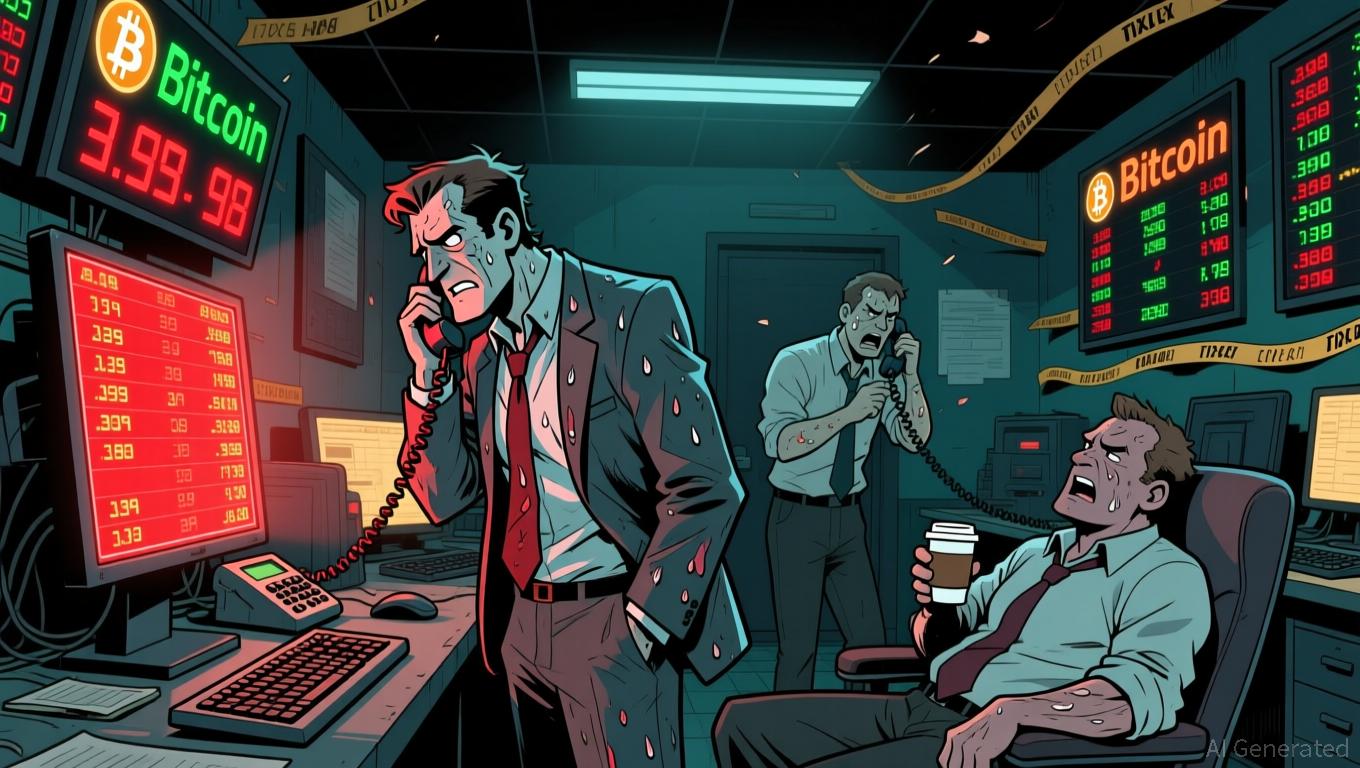Tech’s Progress Dilemma: Expansion and Risks Evolve Side by Side
- Cloudflare and Akamai show tech sector's growth in cloud/AI but face valuation concerns amid slowing markets. - Recent Cloudflare outage exposed centralized infrastructure risks, disproportionately affecting smaller platforms. - CEO Prince warns AI replacing junior staff could harm innovation, emphasizing human-AI collaboration's value. - Web3 projects grapple with balancing decentralized protocols against centralized CDN/DNS dependencies in user-facing layers. - Industry must reconcile rapid innovation
The technology industry continues to be a contradictory force, driving both advancement and exposing new weaknesses at the same time.
Cloudflare’s results for the third quarter highlight its ability to withstand a slowing technology market. The company’s revenue climbed 31% year-over-year to $562 million, and non-GAAP operating income reached $85.9 million, representing a 15.3% margin—
The convergence of artificial intelligence and workforce trends adds further complexity.

The latest Cloudflare service interruption brought to light weaknesses that go beyond technological optimism. A “latent bug” in the company’s bot mitigation system led to widespread outages, resulting in 500 errors on platforms such as X (Twitter), ChatGPT, and Coinbase—
The incident has revived discussions about redundancy in crypto infrastructure. While many projects focus on decentralized protocols, their user interfaces often rely on centralized CDNs and DNS services. This creates a “chokepoint” risk: even if a blockchain is distributed across thousands of nodes, a single CDN failure can cut off access to vital applications—
As the sector deals with these issues, moving forward will require balancing innovation with systemic risk. Cloudflare’s 30% revenue growth and Web3’s experiments in governance showcase the industry’s promise, but the recent outage and valuation debates are reminders that advancement is not guaranteed. In an era where technology increasingly defines global connections, the boundary between progress and risk becomes ever more delicate.
Disclaimer: The content of this article solely reflects the author's opinion and does not represent the platform in any capacity. This article is not intended to serve as a reference for making investment decisions.
You may also like
Bitcoin Update: Federal Reserve's Balancing Act and Death Cross Indicate Extended Bitcoin Downturn
- Bitcoin fell below $91,000 amid $3B ETF outflows, technical "death cross" signals, and shifting Fed policy expectations. - BlackRock's IBIT saw record $523M outflows, while Mubadala tripled Bitcoin holdings despite market volatility. - Fed officials split on December rate cuts (46% chance now vs. 93.7% earlier), with Waller citing weak labor markets. - Stablecoin balances hit 11-month lows, Nansen traders added $5.7M short positions, and XRP derivatives stagnated. - Bitcoin and Ethereum entered technical

Hyperliquid News Today: Individual Investors Drive Equity Perpetuals Amid Heightened Risk Discussions
- Market participants advocate unrestricted stock leveraged perpetuals as a simpler alternative to 0DTE options, citing growing retail demand for leveraged equity exposure. - Decentralized platforms like trade.xyz and Felix dominate equity perpetuals trading, with Nasdaq 100 perpetuals generating $75M daily volume versus $5.5M on Ostium. - SafePal integrates Hyperliquid's perpetuals exchange into its wallet, reflecting DeFi's hybrid CeFi-DeFi evolution and expanding tokenized asset risk products. - Recent

Solana News Update: Solana's Swift Growth: Will Advancements Surpass Security Obstacles?
- Solana emerges as a high-performance Ethereum alternative, gaining traction in DeFi and Web3 due to scalability and low fees. - 21Shares launches a regulated Solana ETF (TSOL), offering institutional access but exposing investors to volatility and smart contract risks. - Bitcoin Munari (BTCM) aims to build institutional-grade Solana infrastructure with EVM compatibility and delegated proof-of-stake by 2027. - Despite growth, Solana faces network congestion and security challenges, though regulated produc

Bitcoin Updates Today: The Future of Bitcoin Miners in 2026 Depends on Competing with AI for Control Over Energy Resources
- Bitcoin miners face 2026 survival challenges as energy costs rise and AI data centers compete for cheap power, with U.S. wholesale electricity projected to increase 8.5%. - Structural risks like power contracts and mining pool concentration (6 pools control 95% of block production) threaten industry stability alongside capital-intensive expansion. - Federal policy gaps contrast with state-level initiatives (e.g., Texas) while firms pivot to AI/HPC, with mixed results as seen in Bit Digital's earnings and
